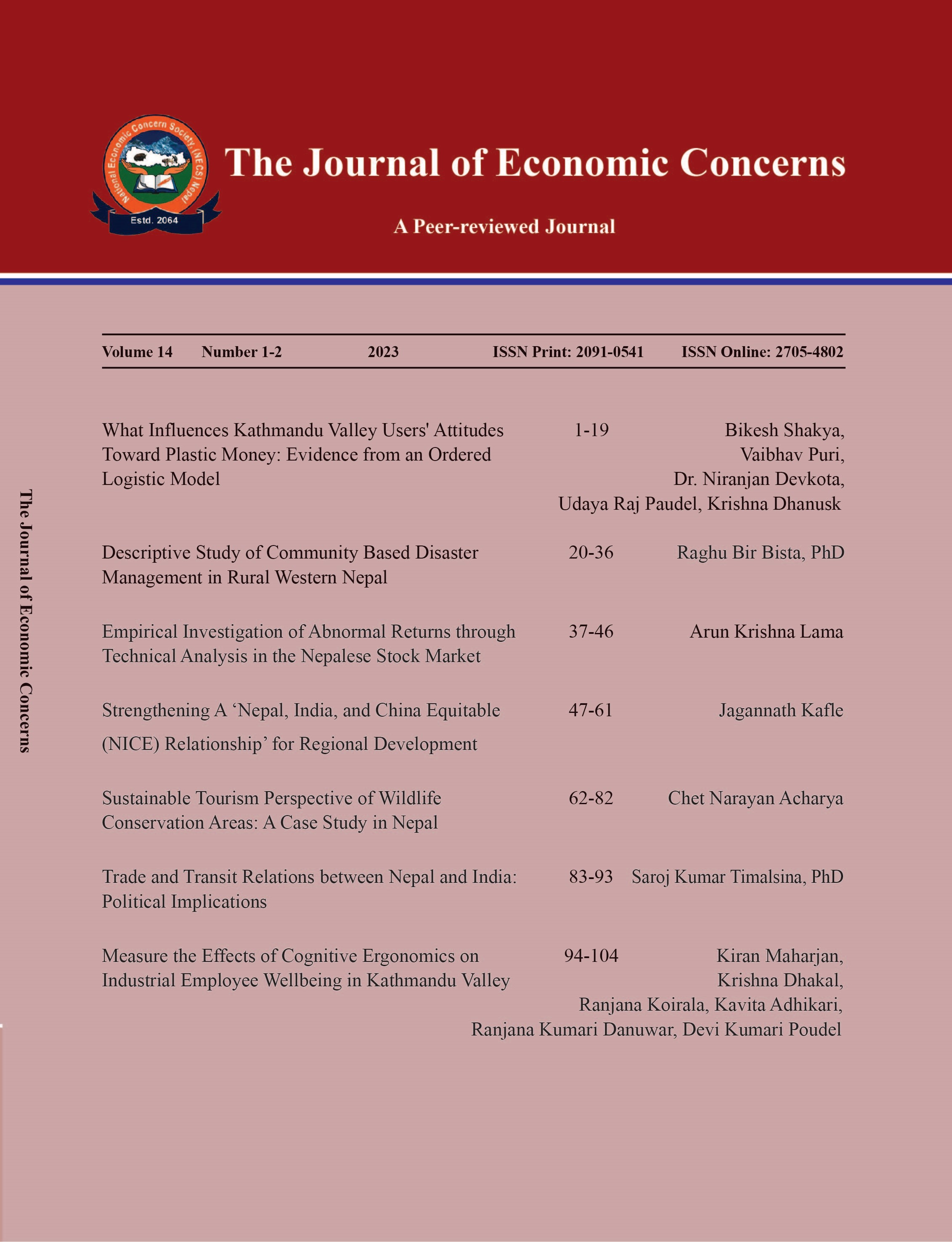Sustainable Tourism Perspective of Wildlife Conservation Areas: A Case Study in Nepal
DOI:
https://doi.org/10.3126/tjec.v14i1-2.62315Keywords:
Sustainable Tourism, Biodiversity Conservation, Conservation Policies, Community Involvement, SWOT Analysis, NepalAbstract
The conservation of biodiversity is a critical issue all around the globe, which is home to a diverse range of flora and fauna, including several endangered species. Tourism has been identified as a potential catalyst for the enhancement of the value of biodiversity and the promotion of conservation in modern development paradigm. However, there is a need to examine the opportunities and challenges of using tourism for these purposes. This research used a mixed qualitative study approach for data collection. The researcher has used document review, case study, FGD and expert opinion poll methods in order to capture the in-depth understanding on the issue. The SWOT analysis was used to identify the current status of sustainable tourism in Nepal and its potential for biodiversity conservation. The study found that Nepal has made significant progress in promoting sustainable tourism practices and biodiversity conservation. The government has implemented various policies and regulations to promote ecotourism, such as the establishment of national parks and conservation areas. However, there are still weaknesses that need to be addressed, such as poor waste management, insufficient infrastructure, and lack of awareness among tourists and locals about the importance of biodiversity conservation. The study highlights the need for a more strategic and collaborative approach to tourism development in Nepal that prioritizes biodiversity conservation and sustainable livelihoods. Furthermore, the study suggests that research is needed to identify the potential impacts of climate change on biodiversity in Nepal and develop adaptation strategies for the tourism industry. The research provides insights into the sustainable tourism perspective of biodiversity conservation in Nepal and highlights the need for collaboration among stakeholders to promote sustainable tourism practices and biodiversity conservation in Nepal. The findings suggest that tourism can play a positive role in biodiversity conservation, but this will require careful planning, effective management, and close collaboration between stakeholders in the tourism and conservation sectors.




